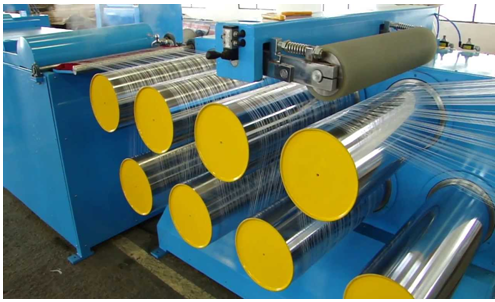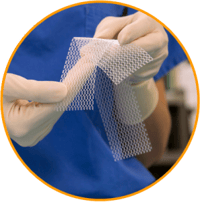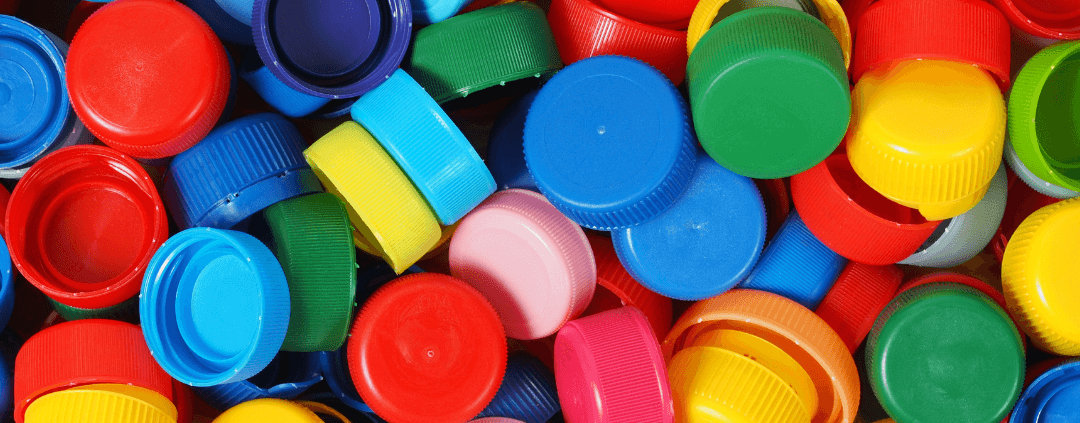Share this
Quick Guide To Polypropylene: With 3D Printing Insight
by 3devo on Mar 29, 2022 11:26:00 AM

Polypropylene plastic is a cost-feasible and versatile polyolefin first polymerized in 1954. At the time, it meteorically rose in popularity because of one feature – a density lower than all other industrial plastics. Today, polypropylene accounts for over 16% of the world’s plastic production, which is among the highest for anyone plastic. This is not surprising, since polypropylene finds applications in numerous industries – from automotive to textiles, from packaging to medical supplies. This article looks at various aspects of the wondrous plastic that is polypropylene. So, let us dive into polypropylene, its properties, its contribution to the world, and its potential in 3D printing applications.

Monofilaments extrusion process (via Polyfill)
Polypropylene Properties
There are at least five different methods of manufacturing polypropylene (PP), each of which gives rise to different properties. The slurry technique, for example, produces highly crystalline polypropylene. When a polymer is crystalline, it means that the molecules are arranged in a very orderly manner; the crystallinity has an influence on the hardness and density of the plastic. The slurry technique also results in other crucial properties like high mechanical strength and yield stress.
Generally, polypropylene tends to have a smooth surface with a low coefficient of friction. Importantly, it is also blessed with high heat, electrical, chemical and abrasion resistance, which makes it useful in many industries. However, it is important to note that polypropylene is highly vulnerable to degradation under UV light. Hence, it is not suitable for applications that involve exposure to sunlight.
Applications of Polypropylene
As we mentioned earlier, its many superb properties make PP a useful material for a variety of industries. It is commonly used to make containers and other packaging materials for food, chemicals, and biologicals – and with good reason. Polypropylene sheets and films offer high puncture resistance, mechanical strength, and stretchability. Moreover, their excellent optical properties in addition to mild permeability to gases, and high permeability to water give them a significant edge over various other packaging materials.
Polypropylene also has numerous applications in the medical sector, including as a base material for surgical meshes and sutures. Additionally, it is a commonplace material in the construction, automotive, and sports industries. So diverse are polypropylene’s uses that it is even used to make water pipes, water bottle caps, and lab equipment.

Polypropylene mesh used in the medical sector (via Medic Shelf)
In fact, a recent study from Canada’s McMaster University has recommended that PP be used in COVID-19 mask filters too. An additional middle layer of spun-bond, non-woven polypropylene in washable cloth masks can give us effective face coverings. Non-woven polypropylene has excellent particle filtration properties, coupled with adequate breathability. Notably, this variety of polypropylene is already popular in the textile and furniture industries where it is used to make ropes, rugs, carpets, and upholstery.
Is Polypropylene Safe?
If you plan to work with polypropylene, it is important to be aware of some concerns over its safety. Polypropylene meshes, commonly used for invasive applications like implantation in the human body, can be toxic once they start degrading. The main reason for this toxicity is the chemicals added during manufacturing. Indeed, toxic antioxidants (like butylated hydroxytoluene) used while manufacturing polypropylene films can migrate into the food stored in these products if exposed to extremely high or low temperatures or microwave radiation.
Moreover, inhalation of PP fibers can result in lung alterations, varying directly with concentration and exposure time. Such observations suggest that we must be mindful of the conditions under which we use and process polypropylene.
So, if you are planning on extruding your own polypropylene filament, remember to conduct your experiments under a fume hood.
Can We Recycle Polypropylene?
Yes, polypropylene is recyclable. Is it recycled enough, though? Unfortunately, no. Despite being one of the most used plastics, PP is the least recycled, with a recycling rate lower than 1%.
Owing to its applications in diverse industries in widely different formats, polypropylene waste often has varying contaminants and properties. Separating these different kinds of polypropylene waste is a difficult and expensive process. Thus, the conventionally-used, thermos-mechanical methods of waste recycling are not feasible in the case of polypropylene. As a result, the majority of the polypropylene waste ends up in incinerators and landfills. Shockingly, PP waste production around the world tops 55 megatons each year, second only to low-density PE (polyethylene).
Luckily, selective dissolution-based chemical methods of polypropylene recycling are not only eco-friendly but also scalable and cost-effective. These methods will hopefully take over and solve the problems related to polypropylene recycling.

Polypropylene for 3D Printing
Polypropylene’s properties make it an attractive option for use in the 3D printing sector as well. Indeed, it is highly amenable to injection molding and extrusion. Still, 3D-printing polypropylene requires a lot of experimentation, as we have discovered through personal experience.
This is truer when using recycled polypropylene, because it would already have been injection-molded once and thus have a high crystallinity unsuitable for extrusion. Extruded recycled polypropylene filaments can have highly variable diameters if you do not use the right settings. Worse, they can even clog the 3D printer nozzle as a result. Thus, there is considerable scope for improvement in 3D printing polypropylene.
Our Experiments with Polypropylene
Given its excellent properties and diverse applications, we have been quite interested in working on 3D printing polypropylene plastic ourselves. We are excited to share that we have been experimenting with recycling polypropylene and creating 3D printing filaments from it.
The most important challenge that we are tackling is making polypropylene 3D printable. As we have alluded to before, polypropylene on its own is not a very 3D-printing-friendly polymer. Sure, we have been able to create spools of polypropylene filament (which, by the way, is quite challenging in itself!). But 3D printing using this filament is not as easy as one might think.
Our goal is to find those optimal parameter settings that can make polypropylene 3D printable. We hope that our trials and tribulations can help expand the use of polypropylene plastic in the 3D printing sector. Remember to revisit this space to learn more about our exciting experiments with filament making and 3D-printing!
Share this
- November 2025 (1)
- October 2025 (1)
- March 2025 (1)
- January 2025 (1)
- December 2024 (2)
- November 2024 (2)
- October 2024 (4)
- September 2024 (2)
- August 2024 (3)
- July 2024 (6)
- June 2024 (3)
- May 2024 (2)
- April 2024 (1)
- March 2024 (1)
- January 2024 (1)
- November 2023 (2)
- October 2023 (5)
- September 2023 (2)
- August 2023 (1)
- July 2023 (1)
- May 2023 (1)
- December 2022 (2)
- June 2022 (1)
- May 2022 (2)
- April 2022 (2)
- March 2022 (6)
- February 2022 (2)
- January 2022 (3)
- December 2021 (3)
- November 2021 (3)
- October 2021 (2)
- September 2021 (3)
- August 2021 (3)
- July 2021 (2)
- June 2021 (1)
- March 2021 (1)
- October 2020 (1)
- June 2020 (1)
- May 2020 (1)
- April 2020 (4)
- November 2019 (1)
- July 2019 (2)
- June 2019 (1)
- May 2019 (1)
- March 2019 (1)
- November 2018 (1)
- September 2018 (1)
- January 2018 (1)
- October 2017 (1)
- September 2017 (1)
- July 2017 (1)
- June 2017 (1)
- May 2017 (1)
- January 2017 (1)
- December 2016 (3)
- November 2016 (2)
- October 2016 (1)
- May 2016 (2)
- August 2015 (2)
- July 2015 (1)